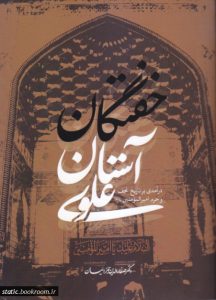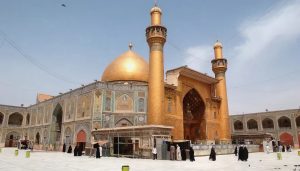Safa al-Din Tabarra’iyan, Khuftegan-e Astan-e ʻAlavi [The Buried in the Precinct of Imam ʻAlī], Tehran: Makaz Ansnad Inqilab Islami, 1400 Sh/ 2021. 850 pp.

Imam ʻAlī’s holy shrine has since been of special interest to Shiis all over the world. As the book under review lists over 625 dignitaries, mainly outstanding Shii ulema, who are buried within the sanctuary of Imam ʻAlī’s holy shrine, it starts with a brief history of Najaf and Imam ʻAlī’s martyrdom. It then indicates that his holy tomb was known only to just a limited number of the devotees of Imam ʻAlī. Hence, it was in 135 AH/ 752 when the sixth Infallible Imam Jaʻfar al-Ṣādiq revealed and marked up the precise location of Imam ʻAlī’s tomb. Since the tragic martyrdom of Imam ʻAlī in 40 AH/ 660 up to then, i.e., 135 AH/ 752, its location was unknown to people. This was because the Umayyad and the Abbasids were intent to destroy his tomb. After Imam ʻAlī’s tomb was marked up, people, particularly Shiis, started paying pilgrimage to it. Despite people’s, particularly Shiis’, ardent desire to pay pilgrimage to the tomb of Imam ʻAlī, certain Abbasid rulers were too insolent to disrespect it. For example, al-Mutawakkil the Abbasid levelled Imam ʻAlī’s shrine in 236 AH/ 850 to show his animosity and deep hatred against Shiis. In contrast, Shii rulers, particularly Persian Buyid dynasties and rulers spared no efforts to reconstruct and enlarge his glorious shrine.

After a short survey of the history of Imam ʻAlī’s holy shrine, the book takes the reader to several mosques built around and in the vicinity of the shrine. It gives a succinct description of Imam ʻAlī’s holy shrine at the present time.
Before giving a review of the book, it deserves mention that the prophets Adam and Noah are buried side by side with Imam ʻAlī. In addition, the Wādī al-Salām Cemetery, located to the north of Imam ʻAlī’s holy shrine, has the tombs of the prophets Hūd and Ṣāliḥ.
The book lists the buried figures, with brief surveys of their lives and main writings or major achievements. The second part of the book is devoted to a collection of the photos or hand-sketch of a selection of the ulema listed in the book.
